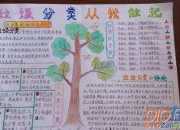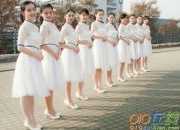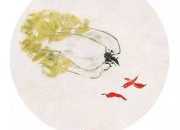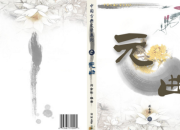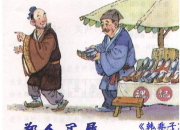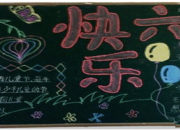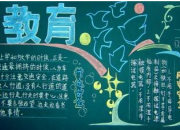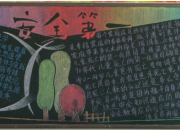外语口笔译实习报告范文(4)
时间:2021-08-31篇六:外语口笔译实习报告范文
本科生实习报告书
二 级 学 院(公章): 专 业 班 级: 学 生 姓 名: 学号: 实习项目名称: 口笔译实习 实习学年学期: 学年第学期
指导教师签名: 系主任签名(章) 实习完成日期:年 月 日
篇七:外语口笔译实习报告范文
2017级笔译技能实习总结
Summary of Translation Practice
The three-week practice of translation skills finally comes to a halt. Undoubtedly, I learnt lots of knowledge during the course of practice. Thanks to the practice of C-E&E-C Translation, I got more translation skills and theories and grew to like it, even though it was time-consuming and intelligence-consuming . Although I encountered some barriers and felt depressed at first, I persisted to the last minute. After finishing a pile of materials, I really had a sense of achievement, since I had never translated so many articles.
The practice started on 30th October lasting for three weeks. It was divided into three stages, which meant that we had different tasks each week. At first, we were assigned to translate the Chinese introduction of “The Hong Kong Story”. Honestly speaking, after reading the original article, I was confused and depressed, because the material was demanding and unfamiliar to me. Thanks to a variety of translation assistant software, I figured out general frame of the version. Nevertheless, I still met some difficulties that were beyond my imagination, such as professional terms and complex sentences. Lastly, we had a panel discussion to find the most accurate expression. Through the first task, I contemplated that translation was a demanding job which required vast accumulation of English vocabulary and idiomatic English expressions, instead of translating word by word.
The second work was about the history of Hong Kong, which was more difficult for me. It included abundant characteristic Chinese elements that had no equal expression in English. To solve these problems, I looked through many references, but I was not totally satisfied with my translation. I knew there was a big gap before I handled English very skillfully. I began to think what differences were between English and Chinese? How could we translate Chinese into English without
losing cultural deposits of China? My answer was reading, for only through gaining more knowledge, could I make the version natural and vivid. What’s more, I was aware of the history of Hong Kong in details, especially the years when it became a colony ruled by English and eventually it came back to the motherland, which motivated my patriotism.
The next work was to translate a specification of a kind of car named Cruze. Though I had read many specifications before, I still had no idea how to translate it. I couldn’t decide that what translating style was the most appropriate. Fortunately, I found out an integrated specification on the website that contributed to my translation a lot, since the car it introduced was quite similar to the Cruze. To some extent, it was the most complexed translation among three, because it required operation of many aspects about the car. Therefore, when translating it, I had to figure out what did the professional term refer to. What a demanding job it was! Depressed by the specification, I had best do desultory reading about real-life English.
Frankly speaking, on the moment that I knew we were required to translate so many materials as a group, it really shocked me. We chose the most efficient way to finish the translation, namely we shared out the work and cooperated with one another. Each member had different tasks, which set aside much time for us to make discussions, so as to find the most suitable expression. As the saying goes, a fence three piles, 3 to help a hero. Therefore, the translation produced by a group was much better than that done by one person. The practice also testified the power of teams work. When we searched English reference in the internet, we found that few catered to our, we had to translate by our own ways. Through the practice, we came to contact with translation skills and theories. Thanks to it, we had a perfect chance to apply those theories to practice. It was not only a chance to improve ourselves, but also an alarm to warm us the very importance of our translation skills. The practice was only to exam our study and ability which let us know better about ourselves.
Concluded the practice in the process during harvest as four aspects: first of all, through direct involvement in the operation of process, learned practical and to further deepen the understanding of theoretical knowledge, so that both theory and practical knowledge enhanced, successfully completed the practical task of the practice. Secondly, it improves the actual ability to work, employment and the future has some valuable experience. Third, I saw the enthusiasm with us when we communicated with each other about the translation. Lastly, the accumulation of the material was for
the thesis and data.
At the end of the practice, I filled with a thousand regrets for I still don’t have a perfect command of English even I have learnt it for about 15 years. It was in fresh year that I realized that when we chose English we were supposed to figure out which one was the most suitable. Therefore, I am not able to use English skillfully like Chinese. Nevertheless, the practice was a wonderful opportunity for me to put what I had learnt before into practice, thus my pros and cons appeared gradually during the practice. It was a big step for us and we ought to cherish every precious practice. By the practice in this term, I realized that it brought me a lot of practice whether it is in theory of knowledge of the real-life knowledge that benefited me greatly. I recognized the master of the professional knowledge in school is insufficient, hence, I suggest that it should participate in more social practice, to broaden our horizons, improve our overall qualities, and so on.
In the end, I would like to thank Mrs. Tan who spent much time going over our translation and pointing out our mistakes, which promoted our abilities to find the best answers. I want to thank my classmates for who respond me as soon as possible when I got into trouble and turned to them. Without them, I cannot complete my practice smoothly.
篇八:外语口笔译实习报告范文
实训名称:笔译实训
实训人: 王丹
指导老师:朱建祥
实训地点:校内实训,本班教室、图书馆、教研室等。
实训时间:2016年11月12日——2016年12月14日(11—15周) 实训小组:朱建祥老师指导的小组
实训成员:师冰冰,孙玉聪,汤师琼,汤笑,田书慧,王丹,王富生姐,王婉,
杨丽娟,杨胜楠,章翠
实训目的:通过本次实习使我能够从理论回到实践,更好的实现理论和实践的结
合,为以后的工作和学习奠定初步的知识。
实训内容:翻译一本英国原版小说的一部分
实训过程:第11周:完成并上交文章大意(约为所分配原文的五分之一长度为
宜)的翻译。
第12、13周:完成并上交初稿。
第14周:完成并上交二稿。
第15周:完成并上交终稿和实训报告。
实训总结:
这次笔译实训是作为英语专业学生以来一次正式的笔译实训机会。尽管之前也有过翻译课,但多是理论知识的学习,实践操作机会很少。这次实训是对之前理论学习的检验。检验了近四年来英语学习的综合能力。实训过程中遇到了不少问题,但在发现问题解决问题的过程中,我可谓获益匪浅。
拿到译文原稿之后,首先要对译文理解,正如傅雷所说:“任何作品,不精读四五遍,绝不动笔??将原作连同思想,感情,气氛情调化为我用,方能谈到翻译”。这个环节是翻译的关键环节,在理解的基础上才能翻译出达意的文章。本篇译文是英国现代作家康拉德的作品,讲述的主要是水仙号上发生的故事,其中突出的人物有唐金、惠特、辛格里顿等人物。我要译的是第一章的部分,也是
主要人物纷纷出场的部分。在这部分,作者用了大量的笔墨对人物进行刻画,并且对船上的夜景进行了描绘。理解中要突破几个问题:
一、 小说是第三人称手法,文中人物大多用“他”来代替,因此我必 须理清“他”具体指的是哪个人物。
二、 文中出现了大量单词零碎的拼写形式或古英语的形式,成为理解
的主要障碍。通过每周二与老师会面提问,以及老师细心的反馈回答,这一问题也迎刃而解。
三、 一些词汇借助手头工具无法查阅,因此通过网络在线词典,以及
一些英语学习网站,这个问题也得到了解决。
理解了译文后,我正式开始着手翻译,翻译之中对一些译文的处理有一些心得体会:
一、 一些有许多后置定语或修饰语的长句,如果将这些修饰语直接缀
在被修饰语前,译文显得太过冗长。如果将这些修饰语变成一个个并列小句,一一翻译,效果就大不一样了。如“Another new hand?a man with shifty eyes and a yellow hatched face, who had been listening open-mouthed in the shadow of the midship locker?”如果将修饰语全堆到人物前,有点头重脚轻。相反译为“另一个新手,长着一双诡异的眼睛和一张瘦削的黄脸,一直躲在位于船中心的储物室阴影处,长着嘴巴倾听着”,会舒服点。
二、 一些句子隐藏着比喻,虽没有明显的喻词,但其实是有内在的比
喻的意味的,翻译时需要体现出来,如“the gust of their benevolence”其实是说“他们的仁慈像一阵风”而不是“他们的一阵仁慈”。又如文中讲到辛格里顿“the body of the old athlete”并非是说辛格里顿是运动员,而是说他的体格像一个老运动员一样健壮。
三、 在一些词汇的选择上,正如周煦良所说:“字典上的字符等于化
学符号,某个英文字,译成中文某字等于水是H2O。我们在译文中要用的是水,而非H2O。”这就要求在联系上下文的基础上,结合语境正确选择词义。如文中多处出现“observe”并非是“观察,遵守”等常义,而是评论的意思,又如“those west Indian nigger run fine and large”,这里“run”明显为系动词,是不能用常义解释的,根据上下文应该是讲那些西印第安黑
人长得结实高大。
四、 由于中英文存在用语的差异,因此要符合目标语的用语的习惯。如时间状语在英文置于句末,在中文中习惯置于句首,即“在某地某人发生了某事”。
经过近一周的翻译,最终译稿终于完成,经老师改过,还是发现了许多不足之处:
一、 一些抽象名词的词义用的不规范或不恰当。如“degradation and furies”按原义翻译为“堕落与盛怒”在原文中确实很生硬,但“屈辱和愤恨”便得体多了。“dispassionately”译为“冷静”比“毫不动情地”更合语境以及叙述对象的性格特点。
二、 人物名字运用混乱,前后没有统一。这也是由于在编辑后没有检查造成的。
三、 标点符号拘泥原文,而没有按照中文意义表述的需要使用。还有“的”、“地”、“得”使用混乱。
四、 文中一些地方,由于确实找不到词义,体会不出意思就直接漏译。还有些句子翻译的生硬,太过欧化。这也是文中最难把握的地方,因为这涉及到中西文化的差异。
经过老师指正,我认真加以修改,尽量使译文更通顺更规范。同时经过维期五周的笔译实训,深感作为英语学习者在学习中存在许多不足:
一、 词汇量不足,词汇是一个积累的过程,并非只是为了应付考试而去被动记忆,应该随时随地,每天坚持积累。
二、 翻译和写作都体现一个英语学习者的综合能力,而扎实的语言功底是硬件,不仅要牢固掌握英语词汇,语法,句法,中文功底也要好,要注重培养语感和驾驭语言的能力。
三、 在英语学习中太拘泥于课本,而很少阅读。作为英语学习者,要想做好翻译,跨越文化差异的鸿沟,必须涉猎群书,特别是阅读原著,了解中西文化差异在语言上的表现。
四、 最重要的就是态度问题,选择了语言学习,就要树立终身学习的目标,要有毅力耐力坚持下去。要抱着热爱的态度,积极的学习,并积极实
践。
以上便是我本次实训的心得体会。在此要特别感谢朱老师的帮助指导,使我顺利完成了实训任务同时又获益匪浅。还要感谢小组成员,其间给我提供许多翻译技巧,提高了翻译的效率。
